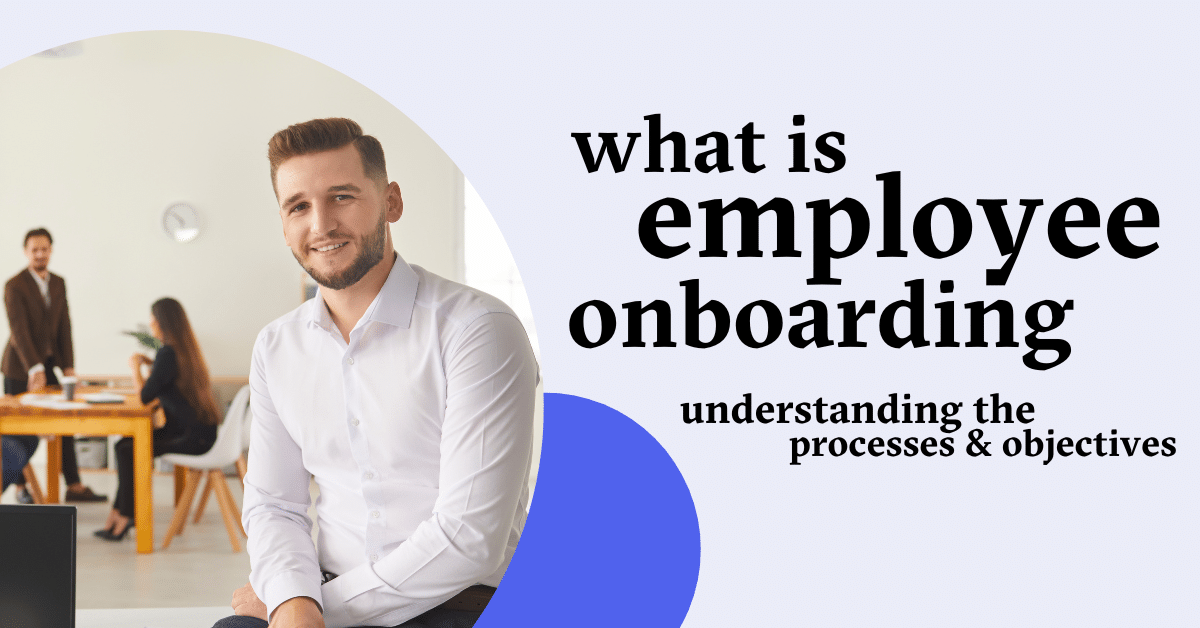What Is Employee Onboarding? Understanding Processes & Objectives
September 30, 2022
As a business owner, you know there’s no more important time in an employee’s tenure than their first few weeks. If the onboarding process is executed effectively, you’ve got a solid foundation for your new employees’ careers with your company. But if the process falls short or needs to be more effective, it can have serious repercussions for both the organization and the employee. This article will explore everything that goes into employee onboarding—from what it means to how best practices have evolved over time. We’ll also cover some key techniques that can help improve your organization’s approach to one of its most critical processes: getting people up to speed on their jobs as quickly and easily as possible!
What Is Employee Onboarding?
Employee onboarding is a process that helps new hires get up to speed quickly. It’s designed to ensure that new employees are productive as soon as possible and to help them understand the company culture and business goals.
Onboarding can take many forms, but it usually includes some combination of the following:
- Orientation at the office, which might include introductions to colleagues and a tour of key areas like HR or IT
- Training on policies and procedures related to job responsibilities (for example, software training)
- Assisting with any necessary setup tasks, such as setting up email accounts or transferring contacts
Who Benefits From Employee Onboarding?
Employee onboarding is a win-win for everyone. For employees, it’s an exciting new opportunity to learn and grow with their employer. It also provides them with peace of mind that they will be supported in their journey as part of the team. For employers, employee onboarding helps them improve retention rates by ensuring that their employees are happy and confident in their roles from day one—and beyond!
The benefits don’t stop there. Employee onboarding also serves as a value-add for both internal stakeholders and external customers alike by providing a smooth transition into the company culture. Most importantly, it sets the tone for future working relationships among co-workers while reinforcing company values and expectations (which translates into higher productivity).
How Should I Effectively Perform The Onboarding Process?
To ensure you are effectively performing your onboarding process, it is important to have a structured approach that includes these steps:
- Get to know them. During this phase, employees will be introduced to everyone in their department—including other new hires—and given an overview of expectations, benefits, and compensation packages. This is also when you should be familiar with the employee’s work style or preferences (i.e., if they prefer email or text messages).
- Set goals together. Employees should have input into setting their own goals, so they feel ownership over them during this step of the onboarding process; however, it’s also important for managers to guide how those goals align with company-wide priorities and initiatives so there isn’t any confusion regarding what’s expected from each party involved moving forward.
In general, remember that onboarding is all about getting to know each other and ensuring every employee knows what they need to do their job well—including giving them a chance to ask questions along the way!
Conclusion
The next time you think about employee onboarding, remember that it’s a process of helping new employees get comfortable in their new roles while also getting to know the company culture and learning how to contribute to its success. This crucial step can make or break an employee’s work experience at your organization, so you must do everything in your power to ensure they’re successful right out of the gate!
share this blog
STAY CONNECTED
Sign up for our newsletter for the latest Tesseon information.
Related Blogs
What our clients are saying about us
Disclaimer: The information provided on this blog page is for general informational purposes only and should not be considered as legal advice. It is advisable to seek professional legal counsel before taking any action based on the content of this page. We do not guarantee the accuracy or completeness of the information provided, and we will not be liable for any losses or damages arising from its use. Any reliance on the information provided is solely at your own risk. Consult a qualified attorney for personalized legal advice.

